Is London’s Knightsbridge still a golden postcode for homebuyers?
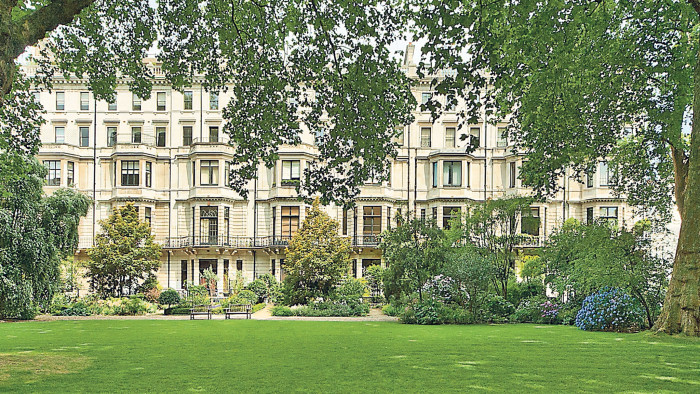
Simply sign up to the Life & Arts myFT Digest -- delivered directly to your inbox.
Knightsbridge, world famous for its shops, picturesque garden squares and the wide open spaces of Hyde Park, has long been a favourite prime central London neighbourhood for wealthy international and British buyers. But its allure is beginning to fade. “Buyers are not focusing on golden postcodes as previously,” says Tom Bill, head of London residential research at Knight Frank. “They are now looking for better value, casting their net wider to Marylebone, the City and the South Bank.”
The number of homes sold in Knightsbridge between January and August this year is down 34 per cent compared with the same period last year, with the biggest fall relating to properties valued between £2m-£5m, according to the property data provider LonRes. The expected spike in property prices after the May UK elections never happened, even though Labour’s plan for a “mansion tax” on expensive homes has disappeared from the political agenda.
Knight Frank believes one of the main reasons for the slowing of prices for prime property in central London was the increase in UK stamp duty for properties above £1.1m that was introduced in December. Their research shows price growth for prime central London was just 1.7 per cent in the year to August, the lowest rate since November 2009. In 2010 prices rose 16 per cent. And according to LonRes, 79 per cent of London prime properties sold for less than their initial asking price in the first quarter of this year.
“The market is going through a period of adjustment. Price growth after 2009 was not sustainable — at some point prices come down,” says Bill.
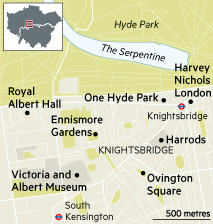
Tax has been part of the government’s plan to calm the market, according to Anthony Payne, managing director at LonRes. “The government didn’t want to see a bubble rising, so took preventive action early.” Prime central London areas have been hit harder because many of the properties fall into the higher threshold, he adds.
Despite the slowdown, these areas are not for slim wallets. It would be hard to find anything in Knightsbridge for £500,000, apart from a short lease studio. Houses in the area are better value than apartments, according to Harry Dawes, a partner and head of the flats department at Knight Frank’s Knightsbridge office. “You can still buy a terraced house, in need of work, for about £2,000 per sq ft,” he says.
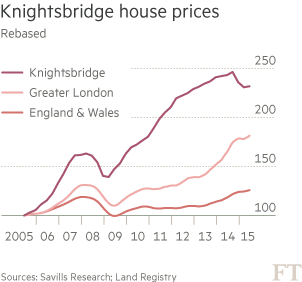
Apartments in opulent new schemes such as One Hyde Park start at about £5,000 per sq ft and rise to more than £7,000 per sq ft for a penthouse. The glass and steel building, designed by Rogers Stirk Harbour + Partners and developed by Candy & Candy, is the block containing the most expensive apartment ever sold in London, for £140m last year. A 3,000 sq ft, three-bedroom apartment within the building, with a communal pool, gym, porter and off-street parking, is on the market with Strutt & Parker for £18.5m.
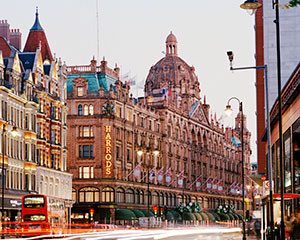
In Ennismore Gardens, tucked away off the busy Brompton Road in central Knightsbridge, a three-bedroom duplex apartment with a balcony overlooking the shared gardens is for sale with Savills and WA Ellis for £10.5m. Annual service charges are £10,000. In Ovington Square, a Grade II-listed freehold five-bedroom house is on the market with the same agents for £9m.
A four-bedroom apartment in a Victorian mansion block in Rutland Gardens, complete with a porter, gym, balcony and share of freehold, is on the market for £8.95m with Knight Frank.
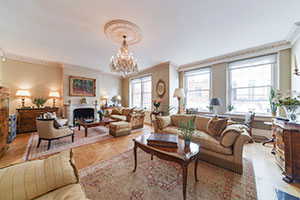
So who is buying? Knight Frank’s summer report reveals that Britons are the largest single nationality buying in central London’s super-prime market, which includes properties above £10m. But they only account for 37 per cent of total buyers; the remainder comprises those from the Middle East, Russia, Europe, India, Africa and North America.
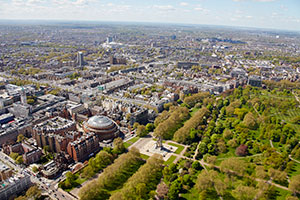
Part of Knightsbridge’s appeal is that it is within walking distance of world-class culture, such as the Royal Albert Hall and the museums in neighbouring South Kensington, as well as high-end shops. Among the most well-known of these is Harrods. “We joked about Harrods being our corner shop where we used to buy nuts and bolts,” says Carol Seymour-Newton, a Knightsbridge resident since 1964, and a member of the Knightsbridge Association, a residents’ group. The area, along with Harrods, has become much more international over the decades. Local butchers and fishmongers have been replaced by mini supermarkets and cafés, she says.
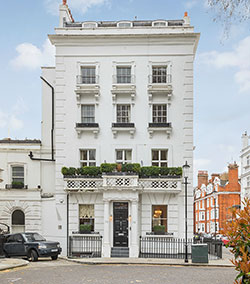
Basement excavations are one of the biggest problems the Knightsbridge Association is tackling. Increasingly, these are being seen as an attractive alternative to moving house, providing extra space while avoiding stamp duty on the purchase of a new property. The Royal Borough of Kensington and Chelsea is taking a tougher line on these dig-downs by restricting their depth, but Westminster City Council, which is responsible for the rest of Knightsbridge, is yet to follow suit.
Some of the larger properties, divided into flats several decades ago, are being converted back into single houses. Seymour-Newton describes this as a “retrograde step” because there is “less mixed housing and fewer smaller flats”. She lives in a house split into 10 apartments in Ennismore Gardens, home to Ava Gardner and her corgi in the 1970s.
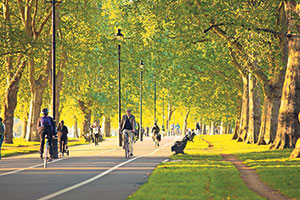
Not everyone agrees that the era of the golden postcode is over. “There’s been a slowdown since the stamp duty increase but I don’t agree international buyers are moving away,” says Lucy Morton of WA Ellis estate agents. Some buy apartments for children studying at nearby universities such as Imperial College, while others rent — yields are between 3 and 4 per cent. However, according to Knight Frank’s autumn residential review, Knightsbridge has seen the greatest fall in average rental price then any other prime central London location in the last year.
While sales slow, people who covet a Knightsbridge address “will take time to consider the charges, sit back and wait to see what happens”, says LonRes’s Payne. In a watch-and-wait market, those keen to sell will need to be patient.
Buying guide
● In July 2015 there were 163 reported crimes in Knightsbridge and neighbouring Belgravia, compared with 95 in Bayswater and 460 in Mayfair and St James
● From Knightsbridge Tube station, the Piccadilly line runs to the West End (five minutes) and to Heathrow (40 minutes), with Victoria train station nearby
● Private preparatory schools in the area include Hill House, an international school, Eaton Square School and Knightsbridge School
What you can buy for . . .
£1m A lower ground-floor, one-bedroom apartment in a garden square
£2m A small two-bedroom flat in a converted Victorian building
£5m A three-bedroom terraced house off the Brompton Road
The rise of Harrods
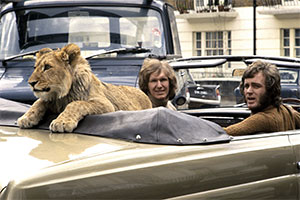
Harrods may be inseparable from its upmarket postcode, but it was not always that way, writes Lily Le Brun. In 1834 Charles Henry Harrod established a grocery and tea business in the more humble Stepney, in London’s East End. After moving to Brompton Road, Knightsbridge, the site of the current store, his eponymous shop diversified into one of the largest department stores in the world. Today, above a vast network of subterranean tunnels that serve its 330 departments, 15m visitors a year peruse 1m sq ft of shopping space.
Embracing its motto “Omnia Omnibus Ubique” (All Things for All People), this was where England’s first “moving staircase” was installed in 1898 — those who braved it were greeted with cognac and smelling salts — and where the original Winnie the Pooh was bought for Christopher Robin.
In the 1930s you could buy a fully equipped ambulance and, during the second world war, military uniform, parachutes and aircraft components. Harrods also boasted a Pet Kingdom where, in 1951, the actress Beatrice Lillie bought Noël Coward an alligator for Christmas, and where Ronald Reagan ordered an elephant, the symbol of the Republican Party, for a political rally in the 1960s.
The department was limited to more domestic creatures after the Endangered Species Act in 1976, and eventually closed last year. But although you can no longer buy a baby lion, niche gifts can still be found — such as the bejewelled shoes so valuable they had a live Egyptian cobra as a guard.
For more properties, please visit ftpropertylistings.com
Photographs: cgpdesign.com; Shomos Uddin/Getty Images; Andrew Holt/Getty Images; Jon Arnold/Getty Images; Derek Cattani/REX
Comments